Lady Grey vs Earl Grey
Lady Grey and Earl Grey are both variations of black tea, each with its unique characteristics. These teas are flavored with bergamot, a citrus fruit, but they cater to different tastes.
Earl Grey is a classic black tea infused with bergamot oil, giving it a distinct citrus aroma. It's known for its bold and robust flavor, often enjoyed with a slice of lemon or a dash of milk.
Lady Grey, on the other hand, is a milder version of Earl Grey. In addition to bergamot, it contains extra citrus flavors like lemon and orange. This tea tends to be lighter and more delicate, making it suitable for those who prefer a subtler taste.
Bestsellers
Comparison Table
| Tea | Primary Ingredients | Flavor Profile |
|---|---|---|
| Earl Grey | Black tea, bergamot oil | Bold, citrusy, robust |
| Lady Grey | Black tea, bergamot oil, lemon peel, orange peel | Light, citrusy, delicate |
Key Points
- Earl Grey is bolder with a pronounced bergamot flavor.
- Lady Grey offers a lighter, fruitier taste with added lemon and orange peel.
- Both teas are popular, but your choice depends on your preference for strong or subtle flavors.
Origins of Earl Grey
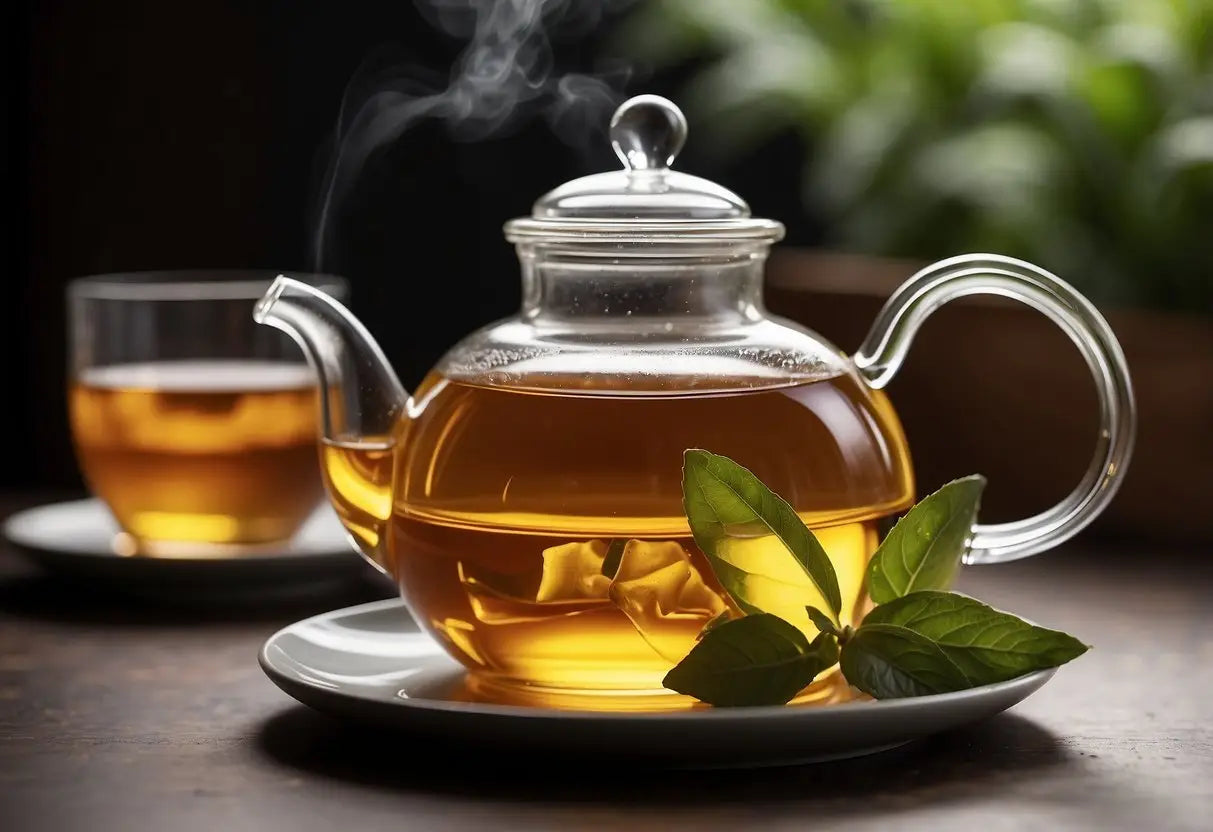
Earl Grey tea is named after Charles Grey, the 2nd Earl Grey, who served as Prime Minister of the United Kingdom in the 1830s.
Legend has it that a Chinese mandarin gave Earl Grey the tea blend as a gift. This blend was said to have been specially prepared with bergamot oil to mask the taste of the local water.
Earl Grey's popularity grew quickly in Western Europe. Many brands started to offer their own versions, each with varying levels of bergamot.
The tea blend traditionally consists of black tea flavored with bergamot oil. Bergamot is a citrus fruit from the Mediterranean region.
Earl Grey remains a well-loved and widely consumed tea variety across the globe.
Origins of Lady Grey

Lady Grey is a relatively recent addition to the world of tea.
Unlike Earl Grey, which has been around since the early 19th century, Lady Grey was created by Twinings in the 1990s. The aim was to develop a tea that retained the citrus notes of Earl Grey but with a softer, more delicate blend.
Key Components:
- Black Tea: The base remains black tea, similar to Earl Grey.
- Bergamot: This citrus flavor is still prominent.
- Additional Flavors: Lady Grey introduces orange and lemon peel to create a lighter, more aromatic tea.
Lady Grey is named after Mary Elizabeth Grey, the wife of Charles Grey, the 2nd Earl Grey. The addition of fruit flavors makes Lady Grey a floral cousin to the more robust Earl Grey.
This tea quickly gained popularity, particularly among those who found traditional Earl Grey to be too strong.
Lao Ban Zhang
You might find Lady Grey to be a perfect afternoon tea—light, fragrant, and refreshing. It bridges the gap between the classic Earl Grey and lighter, more modern tea blends.
Key Ingredients in Earl Grey
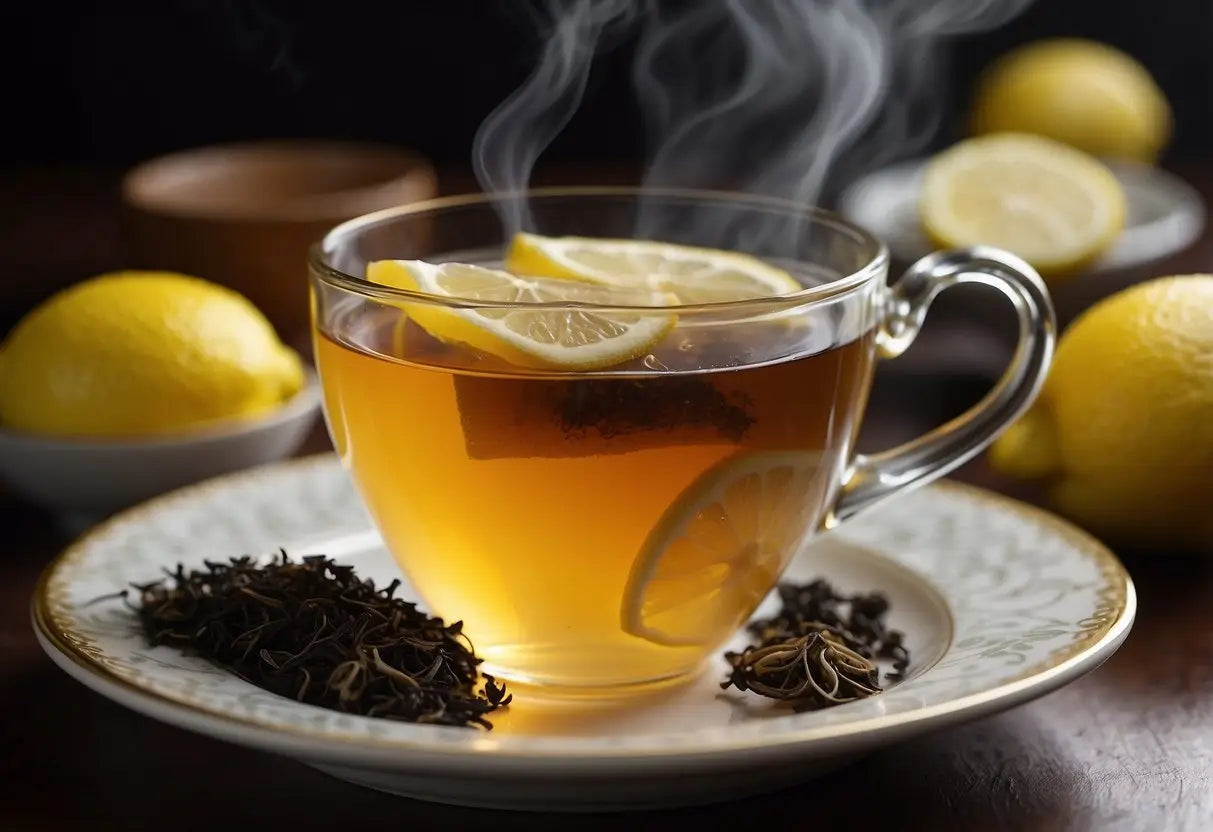
The distinct flavor of Earl Grey primarily comes from bergamot oil. This oil is derived from the rind of the bergamot orange, which imparts a fresh, citrusy taste.
Black tea forms the base of Earl Grey. The type of blacFk tea can vary but usually includes robust teas like Darjeeling, Assam, or Ceylon.
Occasionally, you might find additional ingredients such as lavender, vanilla, or even jasmine. These additions are less common but can add unique nuances.
A simple ingredient table for Earl Grey might look like this:
| Ingredient | Source | Role |
|---|---|---|
| Black Tea | Tea Leaves | Base component |
| Bergamot Oil | Bergamot Orange | Provides citrusy aroma and taste |
Key Ingredients in Lady Grey

Lady Grey tea is known for its unique and refined taste. The key ingredients contribute to its distinctive flavor profile.
Black Tea Leaves
The base of Lady Grey tea is black tea. This provides a robust and full-bodied foundation.
Bergamot Oil
Lady Grey contains bergamot oil, just like Earl Grey. This adds a citrusy note.
Lemon Peel
Lemon peel introduces a bright, zesty flavor. It enhances the citrus aspect of the tea.
Orange Peel
Orange peel contributes sweetness and an additional layer of citrus. It balances the bergamot and lemon.
Cornflower Petals
Cornflower petals are often added. They provide a subtle floral note and an appealing visual touch.
Ingredients List
- Black Tea Leaves
- Bergamot Oil
- Lemon Peel
- Orange Peel
- Cornflower Petals
Enjoy the distinctive blend of citrus and floral notes in every sip of Lady Grey tea.
Flavor Profiles
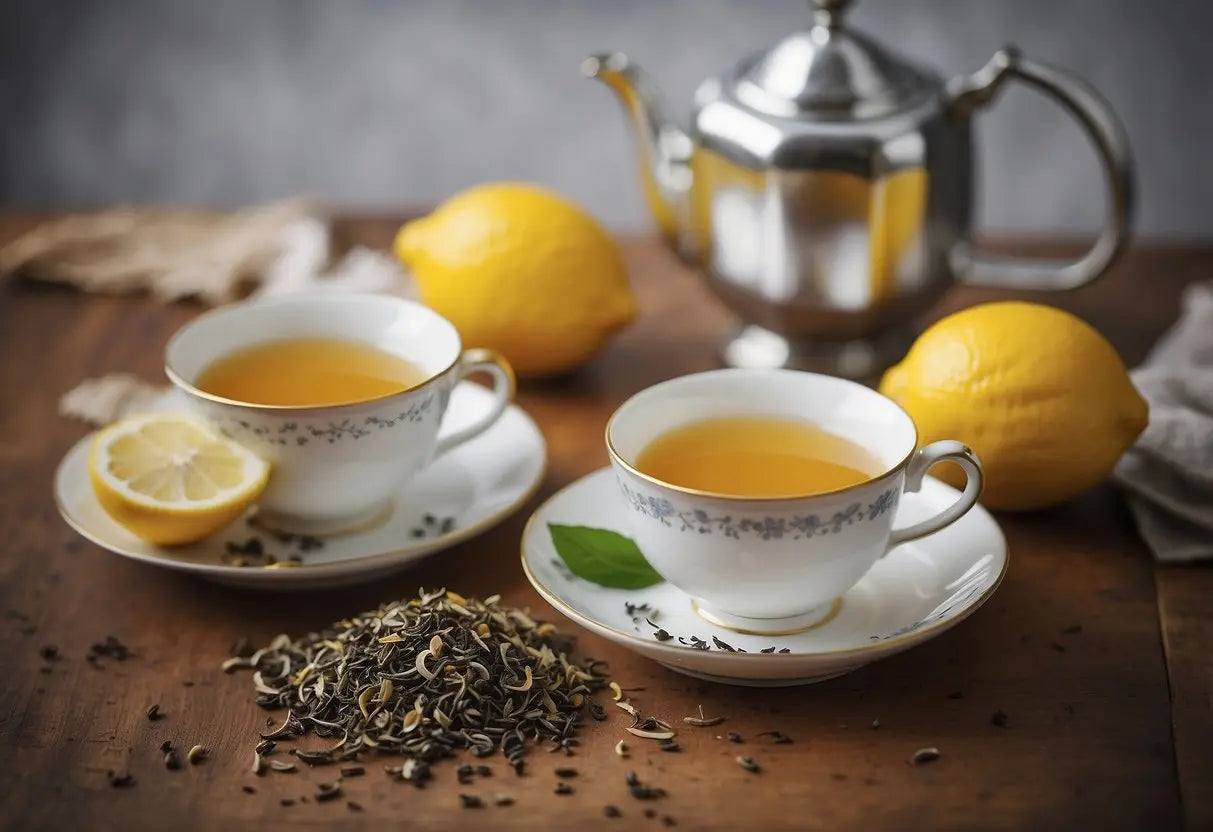
Earl Grey tea commonly features a distinct citrusy taste because of its bergamot oil infusion. This gives it a refreshing character with a hint of bitterness.
Lady Grey tea, on the other hand, includes lemon and orange peel alongside bergamot. This combination results in a softer, fruity flavor profile, making it slightly sweeter.
Key Flavor Components
| Tea | Key Flavors |
|---|---|
| Earl Grey | Bergamot oil, Citrus bitterness |
| Lady Grey | Bergamot oil, Lemon, Orange peel |
Earl Grey is ideal if you prefer a bold and zesty taste. Lady Grey suits those looking for a milder, more delicate tea experience with additional citrus notes.
When you drink Earl Grey, you'll often notice a strong aromatic quality, while Lady Grey brings a bright and light aroma. Both types use a black tea base, but the added ingredients significantly alter the final taste.
You can enjoy either tea plain or with milk and sugar, though the flavor profile of Lady Grey makes it particularly suitable for drinking without milk.
Health Benefits and Caffeine Content
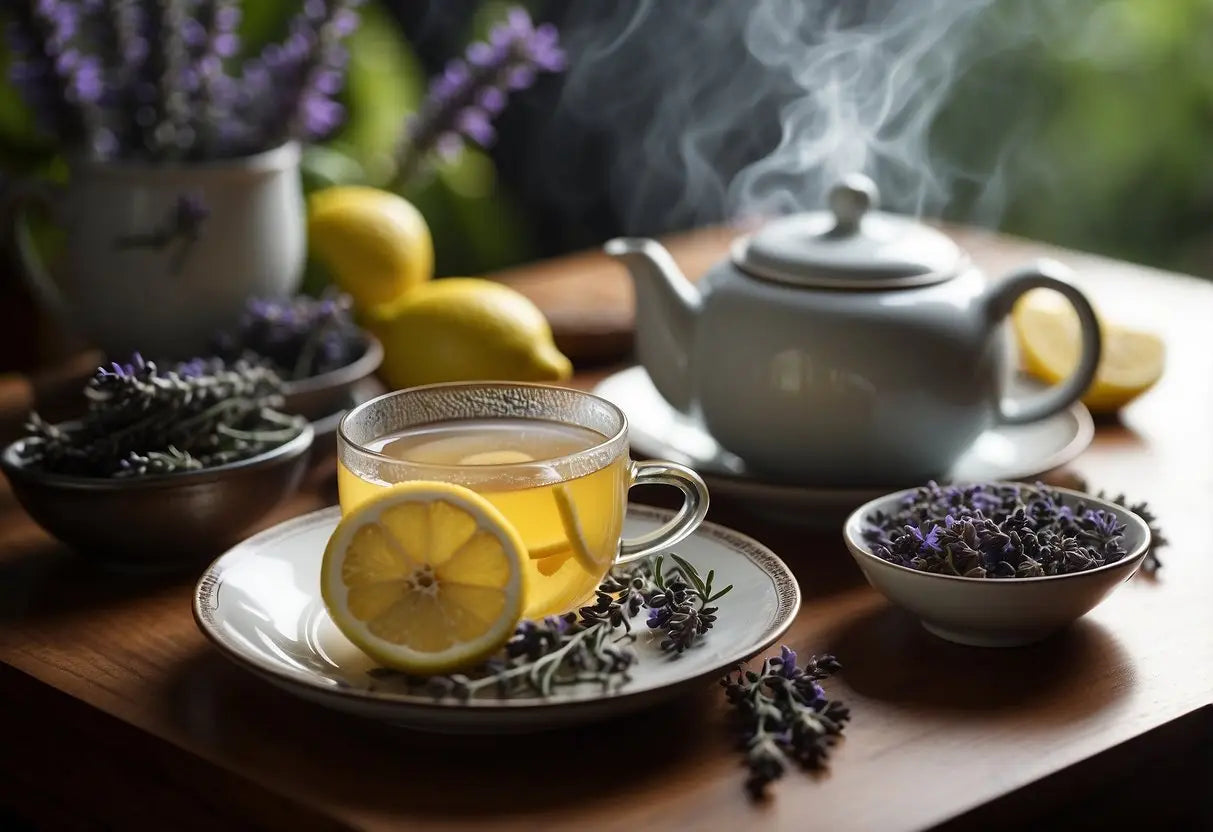
Health Benefits
Earl Grey and Lady Grey teas both offer various health benefits due to their ingredients.
Earl Grey is made from black tea and bergamot oil. It may improve digestion, support heart health, and provide antioxidants.
Lady Grey contains black tea with additional citrus flavors. It shares similar benefits with Earl Grey, such as aiding digestion and providing antioxidants.
Comparative Benefits:
| Benefit | Earl Grey | Lady Grey |
|---|---|---|
| Digestion Support | Yes | Yes |
| Heart Health | Yes | Yes |
| Antioxidants | Yes | Yes |
Caffeine Content
Both teas contain caffeine, though the levels can vary.
On average, a cup of Earl Grey has about 40-70 mg of caffeine, depending on brewing time and tea quality.
Lady Grey generally has similar caffeine content, ranging from 30-60 mg per cup, influenced by its blend.
For those sensitive to caffeine, considering the brewing time can be important. Shorter brewing times result in less caffeine.
Brewing Techniques
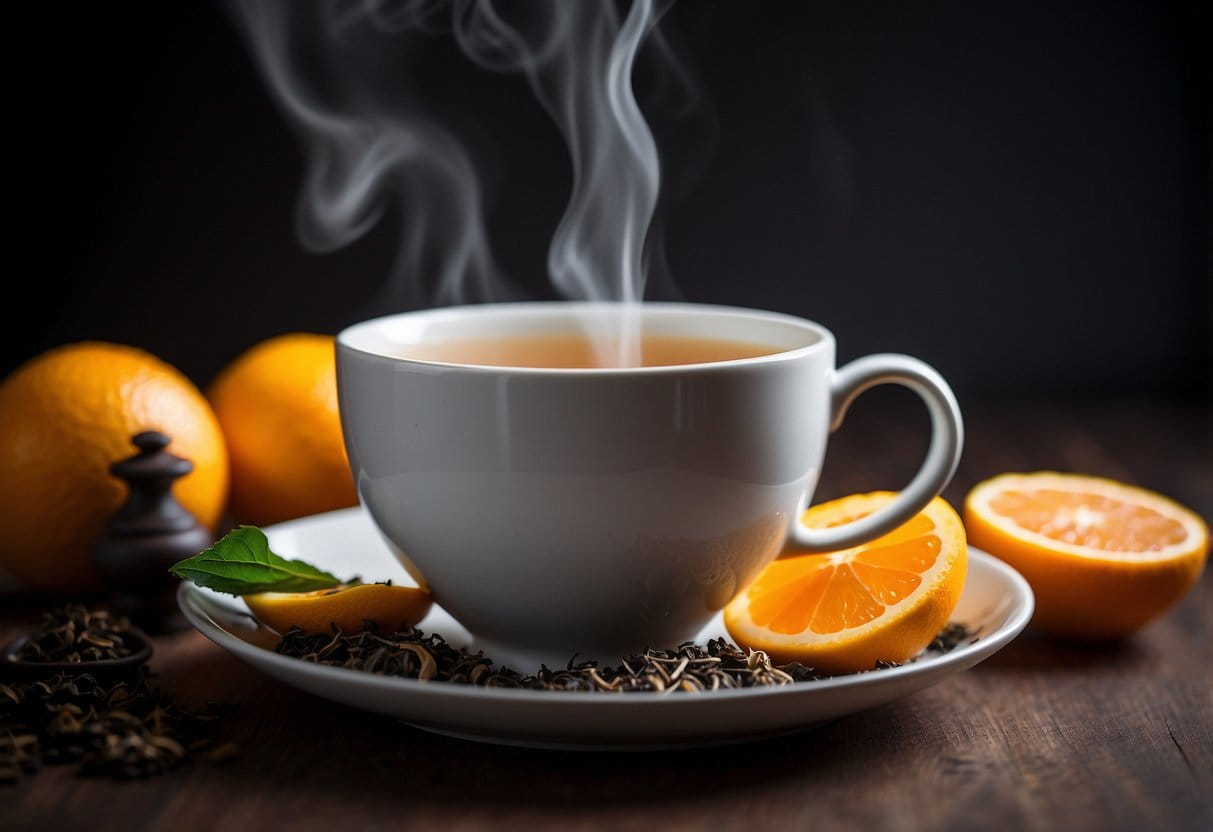
When brewing Lady Grey, use fresh, cold water. Heat it to about 90°C (194°F).
Lady Grey needs to steep for 3-4 minutes. Any longer, and the tea may become bitter.
For Earl Grey, the ideal water temperature is 100°C (212°F).
Steep Earl Grey for 4-5 minutes to achieve the best flavor.
If you prefer a stronger brew, you can steep for an additional minute.
Use a teapot or an infuser. Loose tea leaves will expand better than tea bags.
Measure 1 teaspoon of loose leaves per cup.
For milk lovers, add a splash after steeping. Lemon can also complement the bergamot in Earl Grey.
Experiment with brewing times and amounts to find your perfect cup.
Popular Variations
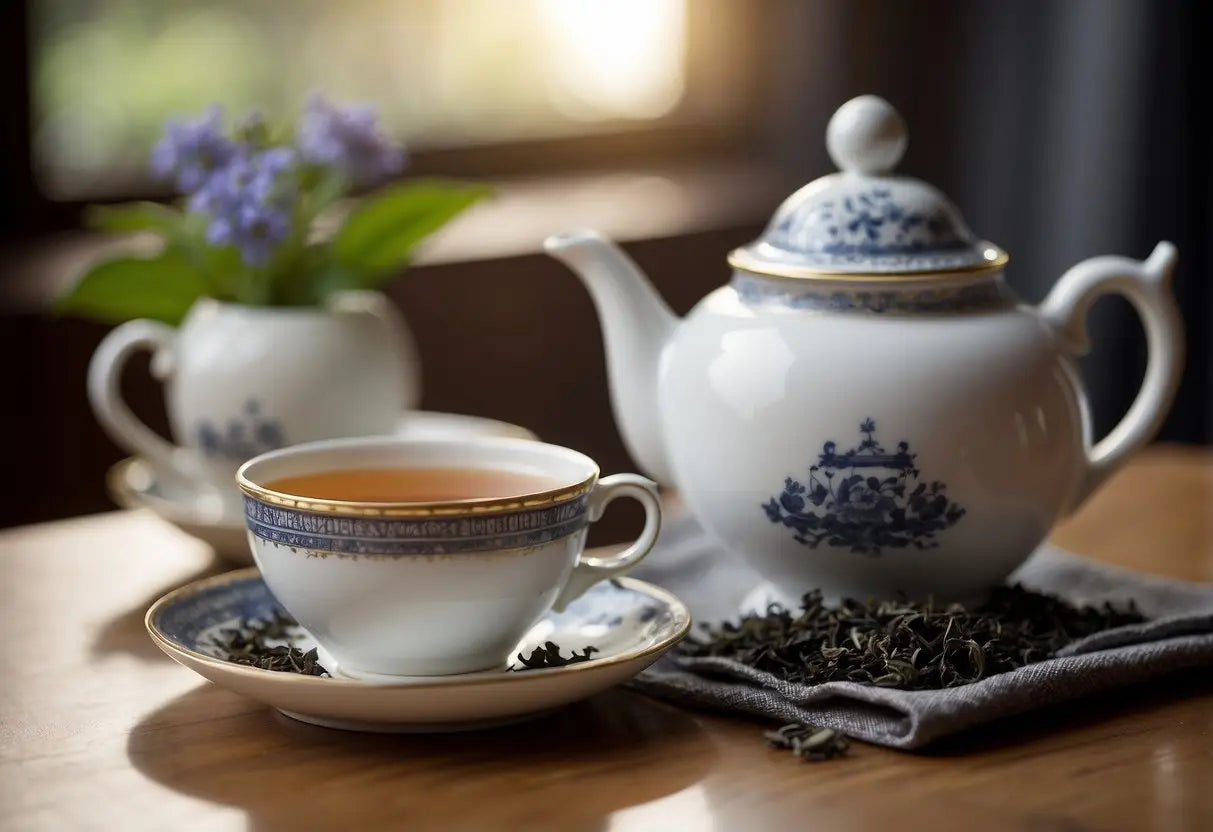
Lady Grey
Lady Grey offers a gentle twist on the classic Earl Grey. It includes additional citrus flavors like orange and lemon peel. The vibrant citrus flavors create a lighter, fruity taste. Some blends also include cornflowers.
Earl Grey
Earl Grey remains a favorite with its signature bergamot oil flavor. Variations of Earl Grey might add lavender or rose, enhancing the floral notes.
Lavender Earl Grey
This variation blends Earl Grey with lavender buds. The lavender imparts a calming, aromatic quality.
Cream Earl Grey
Cream Earl Grey adds a hint of vanilla to the traditional bergamot flavor. This creates a smoother, creamy texture.
Russian Earl Grey
Russian Earl Grey incorporates added citrus flavors such as lemon and grapefruit. The result is a zesty twist on the classic taste.
| Tea Type | Key Ingredients | Notes |
|---|---|---|
| Lady Grey | Bergamot, orange peel, lemon peel, cornflowers | Fruity and light |
| Lavender Earl Grey | Bergamot, lavender buds | Calming and aromatic |
| Cream Earl Grey | Bergamot, vanilla | Smooth and creamy |
| Russian Earl Grey | Bergamot, lemon, grapefruit | Zesty and citrusy |
These variations highlight the versatility and enduring popularity of Lady Grey and Earl Grey teas.
Cultural Significance
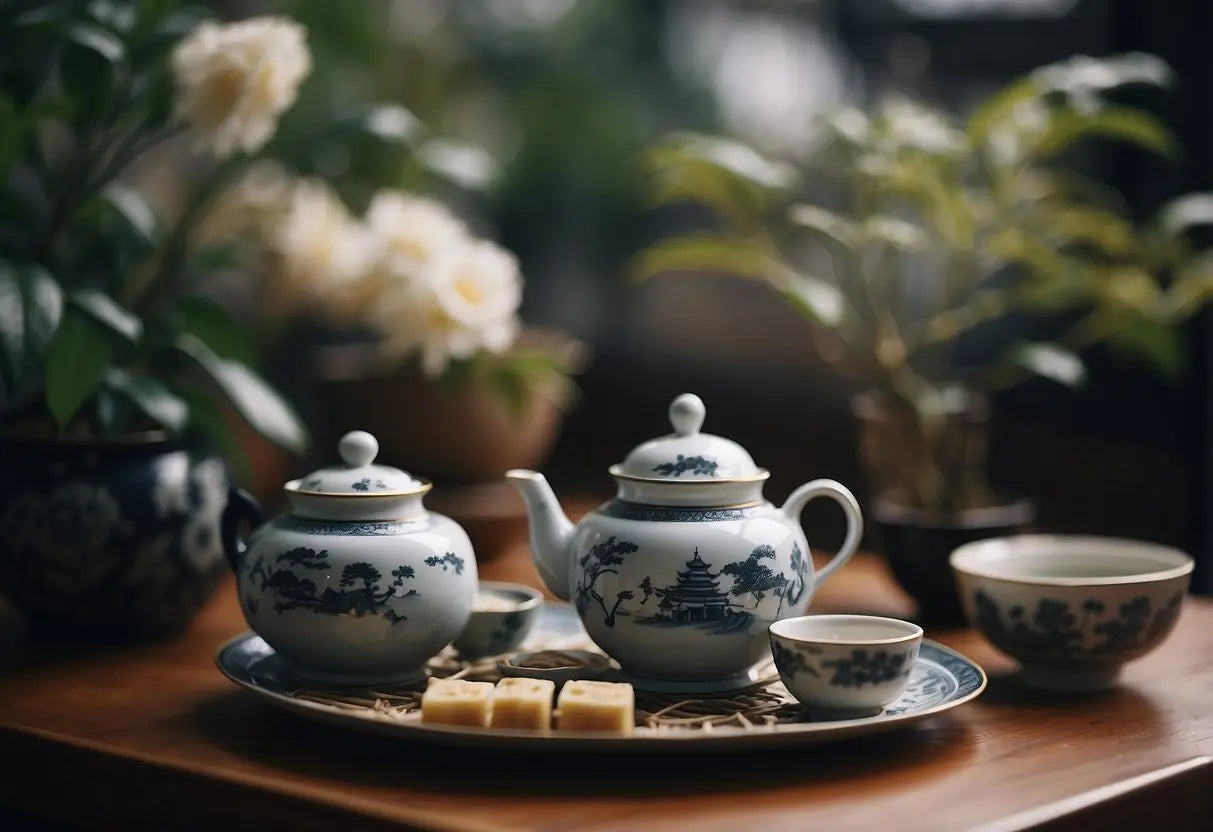
Earl Grey tea holds a special place in British culture. Named after Charles Grey, the 2nd Earl Grey and Prime Minister in the 1830s, it represents a traditional British teatime favorite.
Lady Grey, a lighter and more citrusy variation, offers a refined alternative. It is particularly popular in Europe and North America among those who prefer a softer flavor.
Historical Context:
- Earl Grey: Influenced by British colonial trade and international relations in the 19th century.
- Lady Grey: Created in the early 1990s by Twinings to appeal to a wider audience, especially those sensitive to strong flavors.
Lady Grey and Earl Grey often appear in literature and media. They symbolize sophistication and are frequently associated with high-status social gatherings. This connection to culture and class distinguishes them from other teas.
When you drink Earl Grey or Lady Grey, you participate in a centuries-old tradition. This connection to history enhances the experience, making each sip a link to the past.
Pairings and Culinary Uses
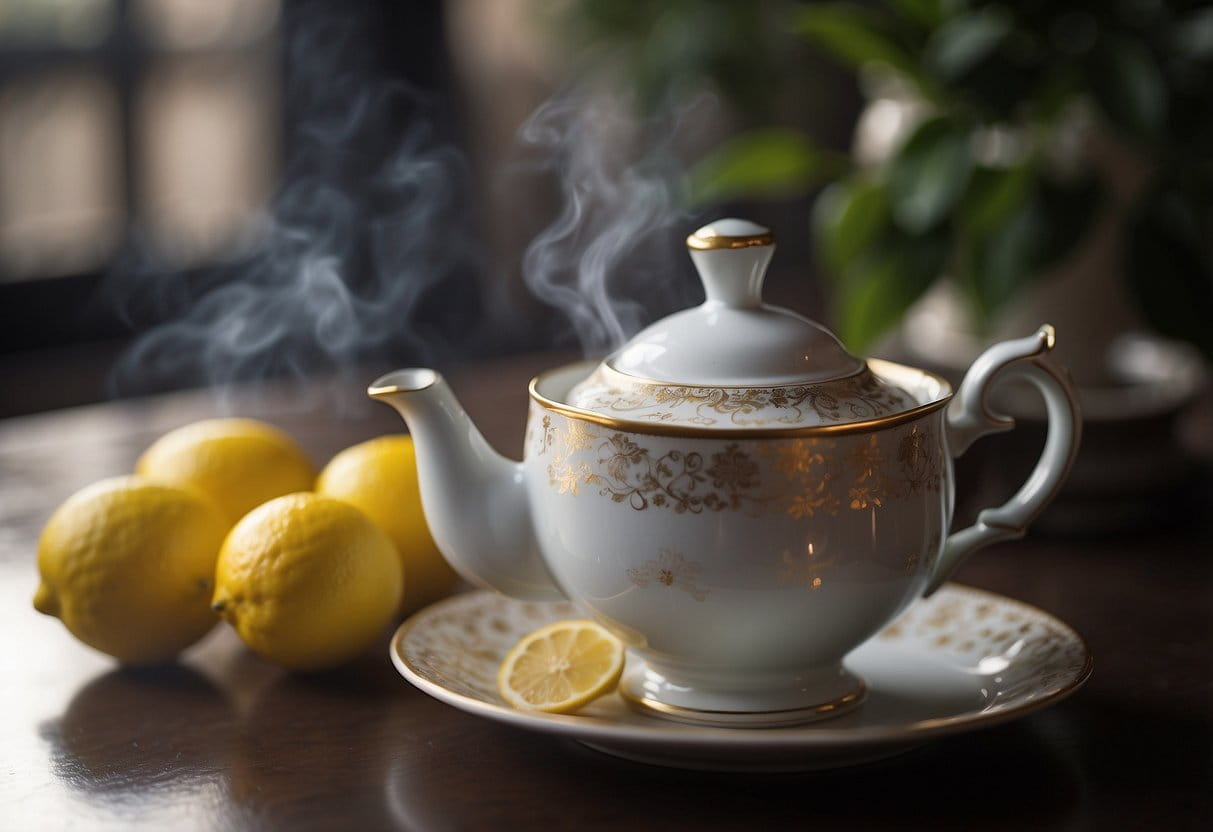
Both Lady Grey and Earl Grey teas have distinctive flavors that can enhance various dishes and beverages.
Lady Grey, with its delicate citrus notes, pairs well with:
- Slightly sweet pastries like croissants or scones.
- Light salads with citrus dressings.
- Mild cheeses such as brie or gouda.
Earl Grey, known for its robust bergamot flavor, pairs excellently with:
- Rich chocolates and chocolate desserts.
- Hearty breakfast items like waffles or pancakes.
- Bold cheeses like blue cheese or aged cheddar.
Both teas can also be used in cooking:
- Marinades: Adding brewed tea to marinades can impart a unique flavor to meats.
- Baking: Incorporate tea into cake or cookie batter for a subtle but distinctive taste.
- Ice creams and sorbets: Infuse cream or milk with tea for a gourmet twist.
Experimenting with these teas in your kitchen can provide delightful results in both savory and sweet dishes. Use them to bring a sophisticated touch to your meals and pairings.
Global Tea Market Presence
Earl Grey and Lady Grey teas are significant players in the global tea market.
Earl Grey is instantly recognizable with its distinctive bergamot flavor and strong black tea base. This tea has widespread popularity, especially in Europe and North America.
Lady Grey, a lighter and more delicate variation, adds hints of orange and lemon peel to the mix. It has gained traction primarily among those seeking a subtler, more refreshing tea experience.
Global Market Distribution
| Region | Earl Grey Popularity | Lady Grey Popularity |
|---|---|---|
| Europe | High | Moderate |
| North America | High | Moderate |
| Asia | Moderate | Low |
| Australia | Moderate | Moderate |
| Africa | Low | Low |
Key Points
- Earl Grey: Widely available in grocery stores, cafes, and specialty tea shops.
- Lady Grey: Often found in specialty stores and high-end tea brands.
Both teas are frequently included in premium tea assortments and are staples in many households. They are also popular gift items, often found in elegant packaging.
Your choice between Earl Grey and Lady Grey might depend on regional availability and personal taste preferences.
You can enjoy these teas in various formats, including loose leaf, tea bags, and even cold brews.
← Older post Newer post →











